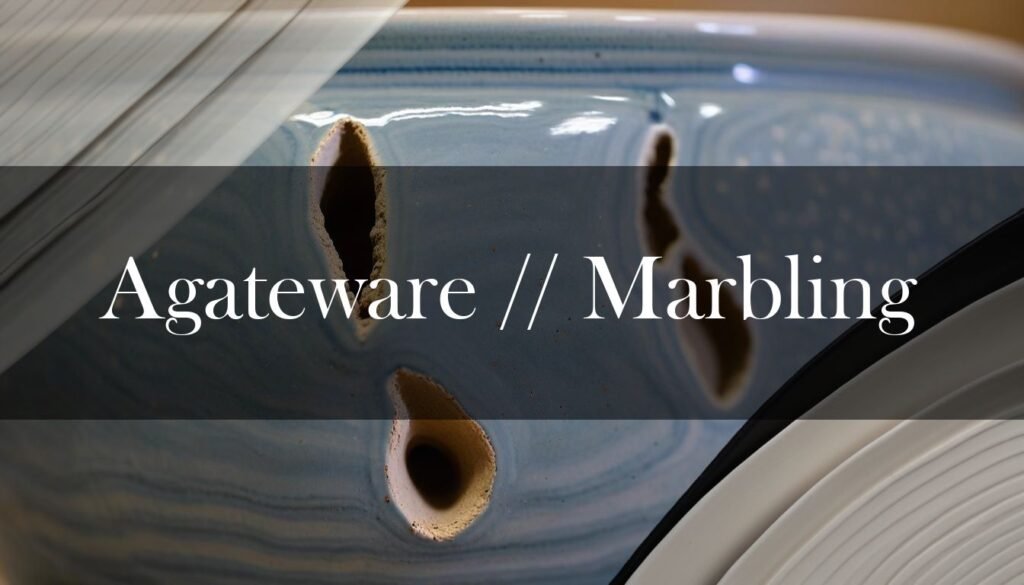Agateware, a captivating style of pottery, draws its inspiration from the mesmerizing patterns found in natural agate stone. Emerging in 18th-century England, it’s characterized by swirling, striated designs achieved through the combination of differently colored clays. Early examples can be traced to the late 17th century with John Dwight experimenting with marbled stoneware. Later, Samuel Bell patented a process for red marbled stoneware in the early 18th century, mixing red and off-white clays. However, it was Thomas Whieldon, in partnership with Josiah Wedgwood, who truly refined the techniques in the mid-18th century. They expertly blended white clays stained with metallic oxides, resulting in pieces celebrated for their unique aesthetic and craftsmanship. More information on the history of Agateware can be found in this article.
The beauty of agateware lies in the techniques used to create it, which fall into two primary categories: thrown and laid.
- Thrown agateware involves blending different colored clays directly on the potter’s wheel. Imagine the dance of hues as the wheel spins, creating a marbled effect that flows throughout the vessel.
- Laid agateware is made by layering thin sheets of colored clays and pressing them into molds. This method allows for more intricate designs and controlled patterns.
Whether thrown or laid, the process demands meticulous preparation, ensuring the colors remain distinct and don’t blend into a muddy mess. This requires careful selection and preparation of clays, and drying, to ensure compatibility during firing. Further information on the methods of creating Agateware can be found on this site. For more on marbling in clay, see this article on marbling techniques. You can also read about different types of clay here.
“Agateware stands as a testament to the enduring appeal of marbling in ceramics, inviting both potters and appreciators to explore the endless possibilities of swirling color and form.”
While agateware’s popularity decreased by the late 18th century, it has seen several revivals. In the 19th century, American potteries, such as the U.S. Pottery Company, produced “scroddled ware,” a form of agateware. Contemporary artists continue to explore and reinterpret these techniques, blending traditional craftsmanship with modern aesthetics.
Today, artists like Yvonne create functional agateware pieces, while Michelle Valigura shares her expertise through agateware workshops, and Eck McCanless crafts pieces with intricate marbled patterns. Agateware stands as a testament to the enduring appeal of marbling in ceramics, inviting both potters and appreciators to explore the endless possibilities of swirling color and form.





